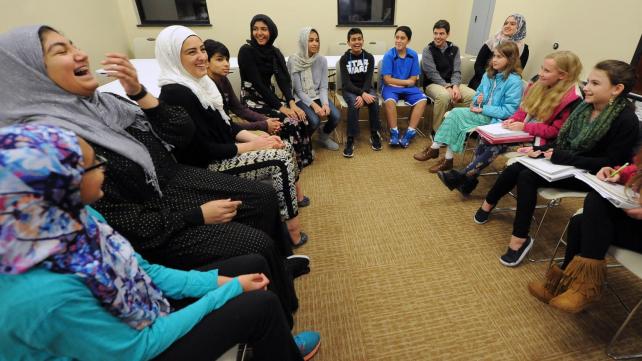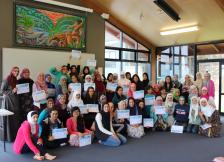
Involving the youth in your organization is dependent on both physical space allotted for their use and the cultural attitude which your organization and the people in it find themselves in.
1. Space: Youth need adequate space for their projects/programs. The definition of this space is dependent on the situation of your organization. Sometimes a masjid is not designed to have a space specifically for the youth, which is a mistake. Other mosques have multipurpose rooms where young people and other groups can have their programs. Other organizations end up renting facilities, reserving park district facilities, or hosting meetings and events in homes. In any case, the main goal is to provide a space specifically for the youth. Space for them should not be an afterthought. Rather, it should be a top priority. If it is not a priority, then the culture of the organization is the root of this problem. This brings us to the next point.
2. Culture: The perception and image of youth in the community is the first thing to analyze to see where an organization stands. Here are some problematic views on youth:
-
They are a nuisance
-
They just destroy property
-
The Masjid is the only a place where prayers take place, and there should absolutely be no other use
-
Masjids are for adults only, and after-school-programs are for youth
-
Youth should not be making any decisions, especially not major decisions that will affect the entire community
-
Youth cannot contribute meaningfully, and are only a burden
-
Youth have their hangout spots already, and should be limited to those places
-
Yelling to discipline youth is acceptable
-
The youth are not as important as adults
3. On the flip side, here are positive and productive ways to view the youth:
-
The Masjid should be a family place, where youth have excellent facilities and resources, and where they feel they fit right in
-
They are an asset
-
They have skills and talents that are unique and can help our organization grow
-
They are just as important as adults
-
Implementing programs for the well-being, growth, and empowerment of the youth is a healthy and crucial for the future of our society
-
Youth’s contributions are meaningful and needed, especially for major decisions affecting the community
-
Speaking to youth like young adults is key
-
Engaging the youth in serious and fun conversations, with respect and appreciation, is the way to communicate with them
4. The next step is defining the youth engagement model that your organization fits under.
Here are three categories from An Emerging Model for Working with Youth Community Organizing + Youth Development = Youth Organizing:
-
Adult-led Organizing Groups: This type of group is one where the organization is led and governed by adults. Youth engagement in this category ranges from having youth as consultants and participants to having youth who are contributors and trainers, and who have access to physical and organizational space.
-
Intergenerational Organizations: Adults and youth are equal partners in this type, where the needs of adults and youth are not placed on a hierarchy, nor are their differences highlighted. This is where youth and adults work together on empowering, educating, and positively affecting the youth.
-
Youth-led Organizations: This is the typical youth-run and led nonprofit, where the young people share authority and power with the adults based on a structure. The complete implementation of this is having the youth on the board of governance, making financial and other decisions that require authority.
5. Once you have chosen the youth engagement category that works best for your organization, the next steps are the following:
-
Outline a youth engagement structure with roles and responsibilities that the youth will have in your organization. There is a youth engagement structure how-to guide in the Youth Engagement Manual for Masjids, MSA's and Community Leaders. Please refer to that section. Staff training on youth engagement is necessary to tweak the culture of the organization and its leaders so that there is an even more open atmosphere for youth to be engaged.
- Involve youth leaders and other nonprofits who have already established a strong youth engagement program. Sound Vision offers workshops for masjids and nonprofits on how to restructure your organization to make it youth-friendly. Please email youth@soundvision.com to schedule a workshop.
Order Your Copy of
"Youth Engagement Manual for Masjids, MSA's and Community Leaders"









Add new comment